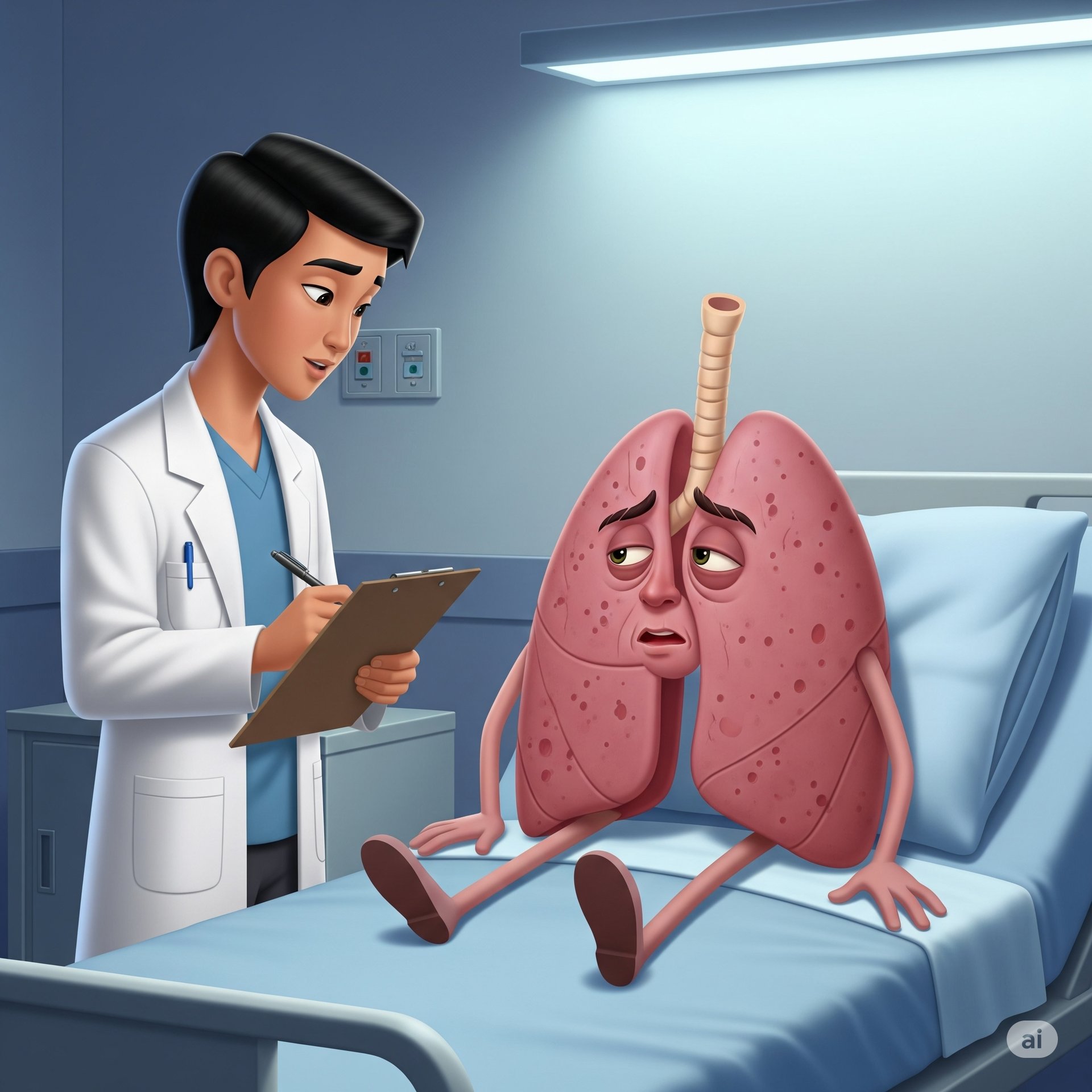THEMEDPRACTICALEXAM.COM

Inspection of the Respiratory System
1. General Survey
Observe for:
Signs of respiratory distress
Use of accessory muscles
Posture (e.g., patient leaning forward in orthopnea)
Presence of oxygen devices or inhalers at the bedside
2. Hands and Nails
Look for:
Cyanosis
Clubbing (loss of Schamroth’s window)
Tar staining (suggestive of smoking)
Other chronic respiratory disease signs (e.g., peripheral cyanosis)
3. Face and Mouth
Inspect for:
Central cyanosis (bluish lips or tongue)
Plethoric complexion (may indicate polycythemia or CO₂ retention)
Conjunctival pallor (suggestive of anemia)
Oral candidiasis (associated with steroid inhaler use)
4. Chest Inspection
a. Shape
Note chest wall deformities such as:
Barrel chest (e.g., emphysema)
Pectus excavatum (sunken sternum)
Pectus carinatum (protruding sternum)
Kyphosis
Scoliosis
b. Symmetry
Compare both sides for equal movement during respiration.
c. Trachea and Apex Beat
Check for visible deviation or displacement of the trachea or apex beat.
d. Chest Movements
Assess for reduced or asymmetrical movement in all regions:
Supraclavicular
Infraclavicular
Mammary
Axillary
Scapular
e. Other Findings
Look for:
Dilated veins over the chest wall
Scars (from previous surgery or trauma)
Sinuses
Intercostal indrawing
Supraclavicular hollowing
Infraclavicular flattening
Drooping of shoulder
Alar flaring (nasal flaring)
Use of accessory muscles
5. Additional Clues
Observe for:
Signs of chronic illness (weight loss, muscle wasting)
Respiratory rate and rhythm
Abnormal breathing patterns (e.g., Cheyne-Stokes, Kussmaul’s respiration)